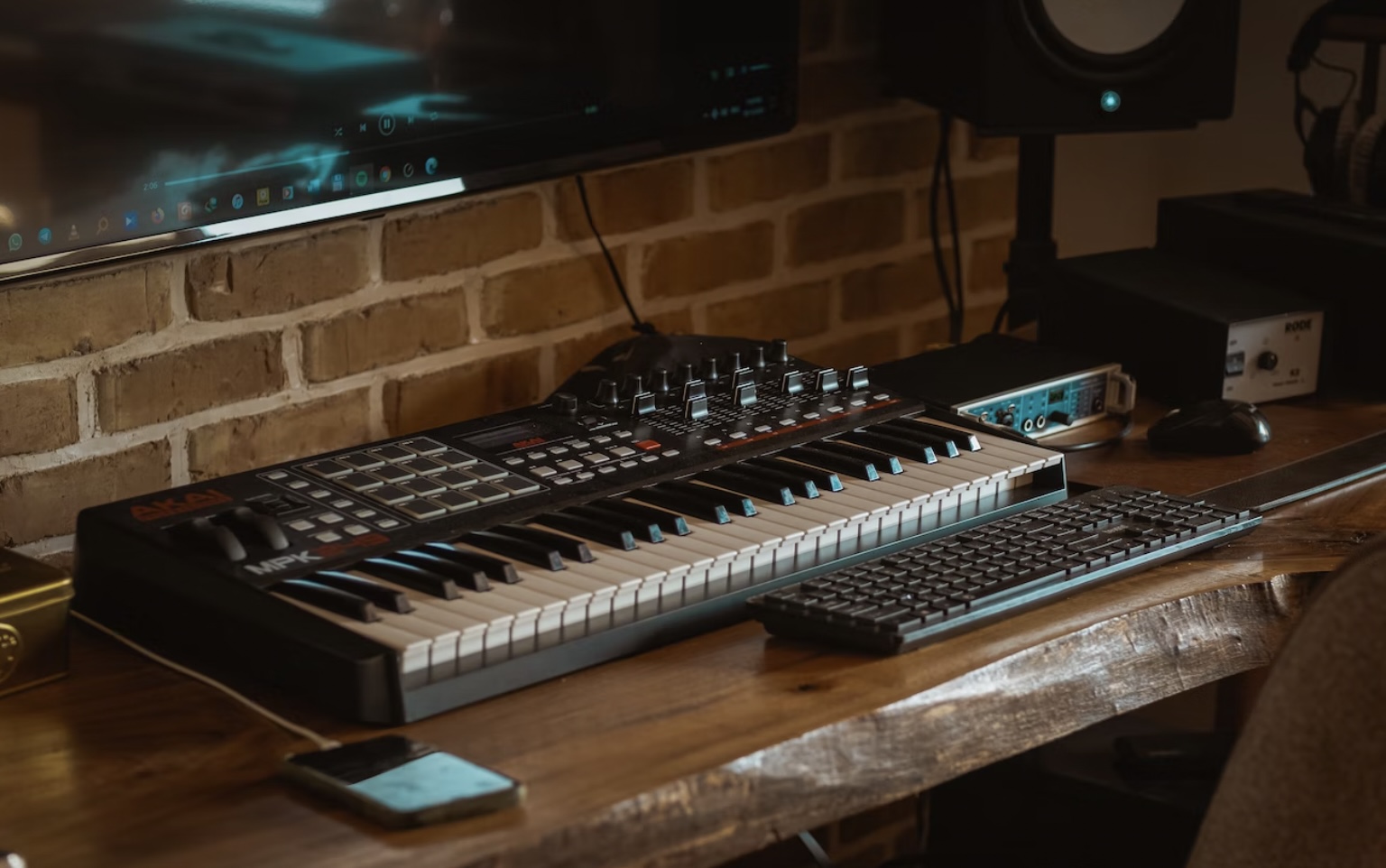Record MIDI piano using our easy guide. MIDI is very useful technology and almost universally used by musicians. Most keyboards and digital pianos have some sort of MIDI compatibility which means that you can easily record in this format.
Most pianists will come across MIDI if they are going to use any sort of digital equipment at all. If you are using acoustic instruments then MIDI won’t be compatible, but it can open up a world of digital opportunities.
What is MIDI?
This article describes MIDI as the most powerful tool in music, and it is hard to disagree with this statement. MIDI stands for Musical Instrument Digital Interface. It is basically a standardized language that allows one piece of music hardware and software to “talk” to another.
You could use a MIDI controller to control a modular synthesizer, for instance. An 88-key digital piano can be expanded to control more sounds and virtual instruments, connecting via a USB MIDI connection to a computer or to another piece of hardware.
The signal sent by one instrument can be understood by another, or fed into your music software. This is where recording comes in. MIDI technology was first used in a widespread way back in the 1980s, but it is still industry-standard today and used in many different scenarios. MIDI is great for live use as well as studio applications.
Why Use MIDI?
When you record MIDI piano, you are not recording audio. Instead, you are recording data. MIDI on its own does not make a sound, but when combined with a virtual instrument or hardware synth the sound gets triggered. Think of MIDI as being like a controller for a games console. On it’s own, the controller doesn’t do anything. However, combined with the software it provides interaction with the game.
MIDI can also be recorded and shared. MIDI files are different from audio files because the data that can be recorded is able to connect to numerous instruments, you could record a chord sequence and then add the sounds later, you can even send the file to someone else. If you look online, you can even find MIDI files that you can download and use in your own music.
These files are also very useful for other types of music production. For example, you can assign drum sounds and these are triggered by the MIDI information. It’s an incredibly flexible file format. Most recording studios will use MIDI in one way or another.
How to Record MIDI Piano
First, check that the keyboard or piano you are using is MIDI compatible. If it has a USB output, and works to control our browser-based piano in our academy then it has MIDI capabilities. This is a good way to test whether a recording might be possible.
Making a recording should be as simple as connecting your controller (such as a keyboard) to the computer and opening your music software. A lot of free software can handle MIDI. Also, you can find inbuilt software such as Garage Band for Mac or iOS, which can adequately record MIDI.
If you want to use free software to record MIDI piano, you can use Audacity.
The main benefit of recording to MIDI is the flexibility it has. You can go into a MIDI file and edit the notes, you can change and tweak the sounds. If you record to what audio pros call “hard audio” then you have lost a lot of these capabilities.
Recording piano practice into MIDI allows you to actually analyze the notes played in the “piano roll” section of your music software or DAW.
There’s a reason MIDI has become so popular in the world of music. It can be used across all sorts of music software and hardware to ensure that you have loads of options for what you can do with your recordings.
Recording Audio From MIDI
Most of the time, it makes sense to record the MIDI notes and then to be able to use these within your DAW. There are some scenarios where you will want to record the actual audio.
In this case, you need to have something like a virtual instrument (VST) generating the sound. Instead of using your DAW to record audio, make sure you have set to record as audio. In some scenarios, you will be able to export the audio or “Bounce” the audio as your choice of file types, from WAV to MP3. This means you can use them in live scenarios or in the studio.
Remember that once you have something as audio rather than MIDI, you will lose some of your options when it comes to editing.
Summary – Familiarize Yourself With MIDI
MIDI is a crucial tool. It is even what makes our academy function when you connect a MIDI keyboard, so you can get real-time feedback on your playing. It makes sense to use this tool if you don’t have access to a grand piano.
FAQs
What is the difference between MIDI and normal keyboard?
A MIDI keyboard that doesn’t generate any sound itself is purely designed for recording and sending data. This means that it will need to be added to a computer or sound module in order to generate the sound. Normal keyboards generate the sound themselves, which means less flexibility.
Is a MIDI keyboard better than a piano?
An acoustic piano can provide a more authentic sound, but that doesn’t necessarily mean it is better. A MIDI keyboard gives you so much more flexibility in terms of recording and performing. MIDI technology makes it very easy to play music at home, edit, and even send data between devices and computers.
How do you record MIDI in real time?
Recording MIDI in real time is a case of setting up your MIDI keyboard with a sound you like, hitting the DAW’s “Record” button and playing the instrument. One of the best things about this is that you can edit it in detail after and change the sound if needed.










